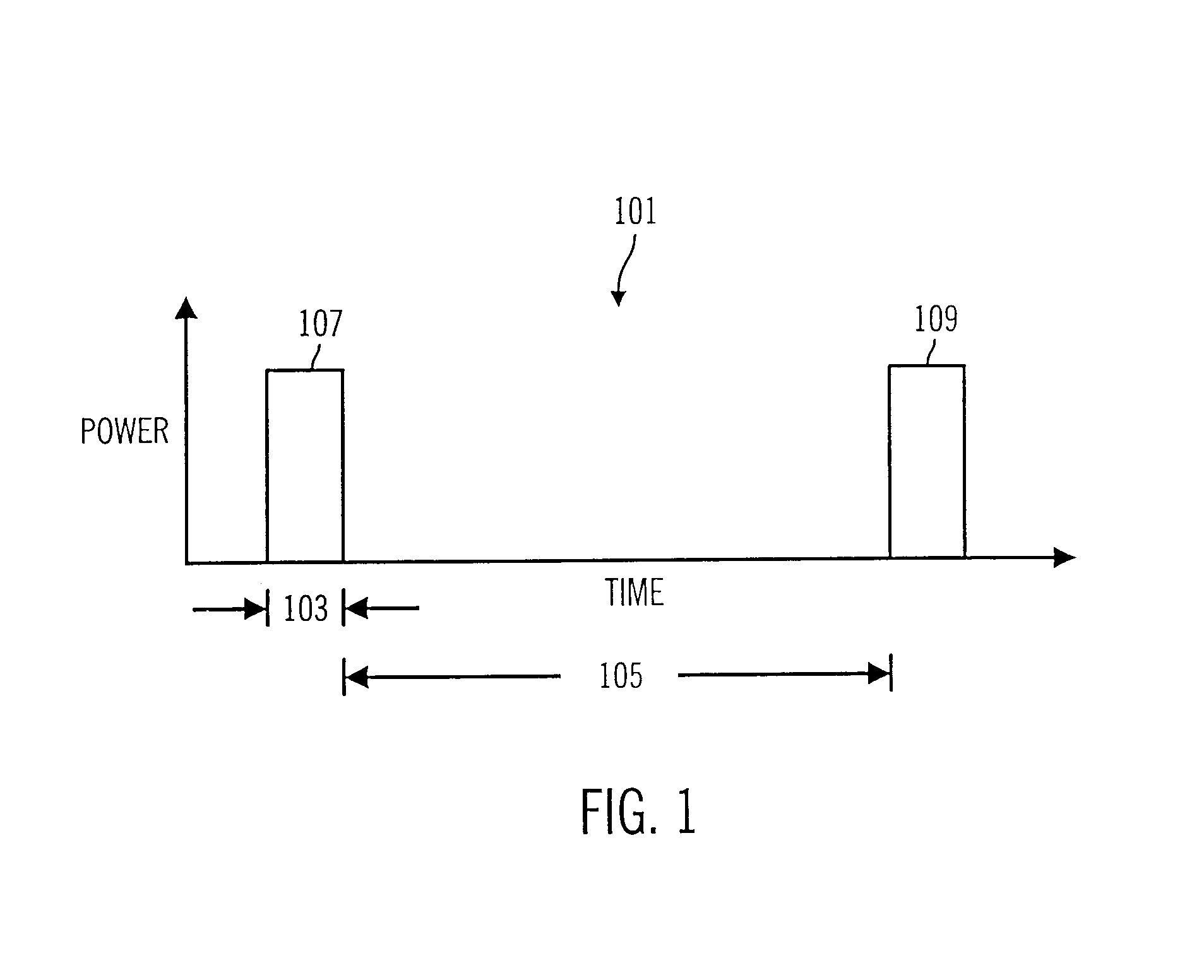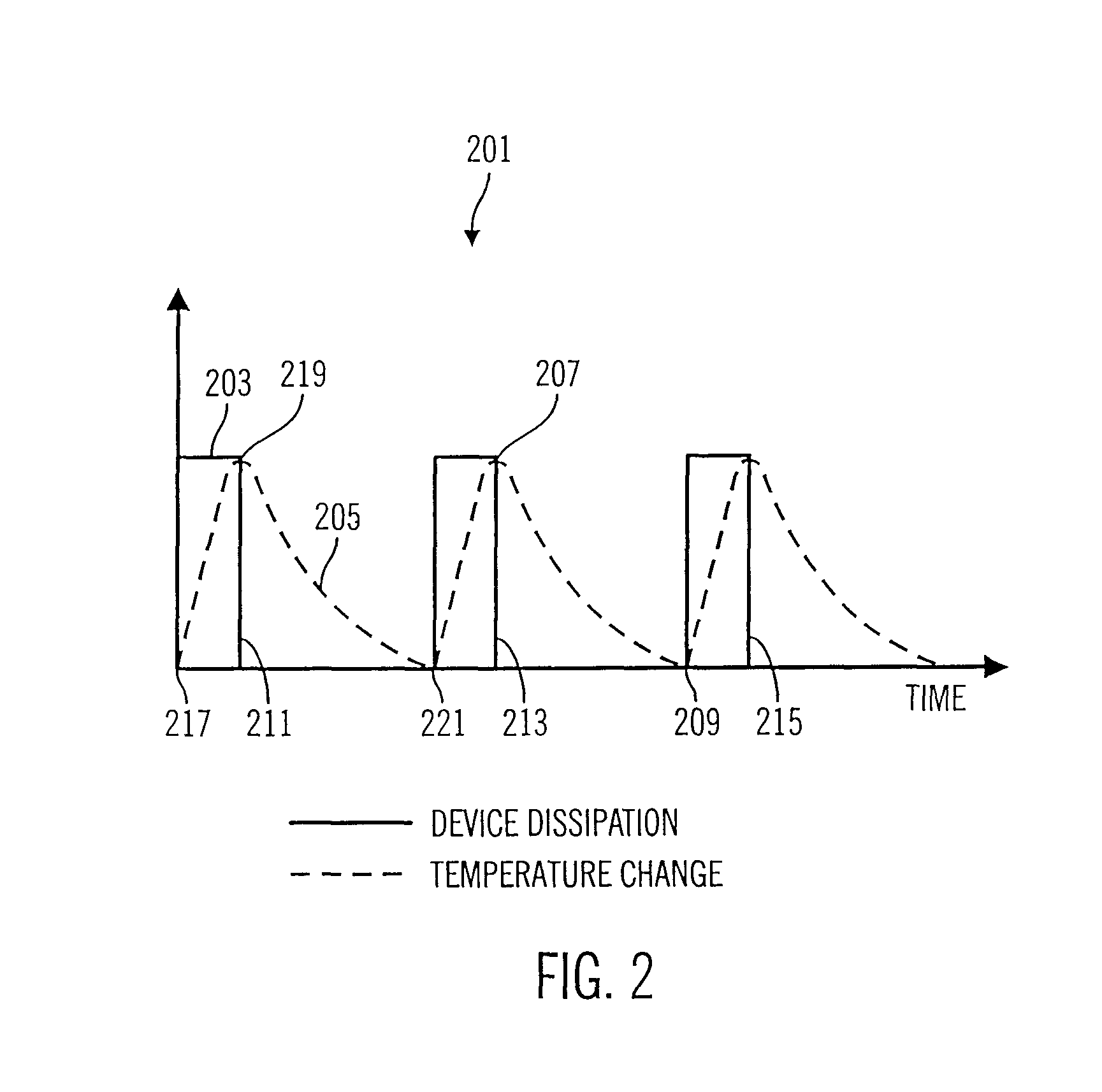Cooling system for pulsed power electronics
- Summary
- Abstract
- Description
- Claims
- Application Information
AI Technical Summary
Benefits of technology
Problems solved by technology
Method used
Image
Examples
Embodiment Construction
In the following description reference is made to the accompanying drawings which form a part hereof, and in which is shown by way of illustration specific embodiments in which the invention may be practiced. It is to be understood that other embodiments may be utilized as structural changes may be made without departing from the scope and inventive concepts of the present disclosure.
Embodiments of the present invention relate, generally, to power dissipation within pulsed power devices, and in particular embodiments to power dissipation within pulsed power devices within portable communication systems.
Power amplification devices, and devices which dissipate significant amounts of power, according to embodiments of-the invention, may be employed in a variety of portable electronic systems. However for the purposes of simplifying this disclosure, preferred embodiments, are described herein with relation to personal communications systems, such as portable phones, wireless phones, two...
PUM
 Login to View More
Login to View More Abstract
Description
Claims
Application Information
 Login to View More
Login to View More - R&D
- Intellectual Property
- Life Sciences
- Materials
- Tech Scout
- Unparalleled Data Quality
- Higher Quality Content
- 60% Fewer Hallucinations
Browse by: Latest US Patents, China's latest patents, Technical Efficacy Thesaurus, Application Domain, Technology Topic, Popular Technical Reports.
© 2025 PatSnap. All rights reserved.Legal|Privacy policy|Modern Slavery Act Transparency Statement|Sitemap|About US| Contact US: help@patsnap.com



